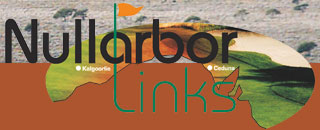Environmental Policy 2013-14
The Nullarbor Plain
The name derives from “null” (Latin for no) and “arbor” (Latin for tree). It is not sure whether it is coincidence or not, but in some aboriginal dialects the word “nulla” means “none” or “not any”.
The treeless plain a relic of the ocean floor, sits on the largest block of limestone on the earth some 250,000km² in area. The shallow calcium rich loam a derivative of seashells does not support the growth of trees. The vegetation consists of succulents, and includes Saltbush and blue bush not cactus as is the case in many other arid areas throughout the world. It is this vegetation that differentiates the dry Nullarbor from other arid areas in Australia, in that it could support mammals that foraged these succulents and gleaned the moisture to enable them to survive in such a dry climate. It is the home of the southern hairy nosed wombat, red kangaroos and dingoes. The rest of the arid interior of Australia tends to be the realm of the lizards and snakes. There is an extensive range of bird life with the wedge tail eagle being the most famous.
One of the features of the Nullarbor Plain are the sheer limestone cliffs some 50-80 metres in height. The southern ocean waves continually pound the rock base undercutting the cliff. The result is the slabs fall off into the sea uniformly along the coastline not only maintaining the cliff’s sheerness but the relative straightness of the coastline.
The Mirning people were one of the aboriginal occupiers of the Nullarbor Plain and according to their dreamtime stories “Jeedera” a water serpent pushed up the cliffs and lived in the caves. He was feared and consequently the caves were not as extensively used by the aboriginal people as one would have thought.
The other noteworthy feature of this landscape is the Great Australian Bight an area of global conservation significance. Several factors combine to contribute to the high level of biodiversity and endemism in the region. The Bight is a well-known calving region for the endangered southern right whale; it contains the only colonies of endemic Pinnipeds, the Australian sea-lion. Taxonomic groups with particular exceptional diversity include unique types of seaweed, sea squirts, lace corals, shellfish, sea urchins and sea stars to name a few.
The Nullarbor Plain that sits above the Great Australian Bight has also contributed to the uniqueness of this area. As a result of the limestone geology and generally low rainfall, no rivers or streams flow into the Bight. The lack of sediment input means that the relic calcareous sands are preserved on the sea floor.
Nullarbor Links believes that environmental factors are critical to its long term success. This Environmental Policy adopted by the brand ensures the integrity of the existing environment and promotes public awareness of the fragility the Nullarbor ecosystems.
The main objectives include:
- Respect the need to protect the local environment.
- Where ever possible prevent, minimise or mitigate any harmful effects to the local environment.
- Strive to achieve effective and sustainable environmental outcomes through disciplined environmental management.
- Course design and management that minimises the environmental footprint.
- Exercise extra diligence where environmental impacts are unknown.
- Regularly review and update specific environmental plans.
Sustainable association with the Nullarbor environs will be an evolving initiative and the Nullarbor Links will continuously improve its Policy based on participants feedback, best practice methodologies and research initiates from relative authorities.
The Nullarbor Links management Committee is committed to environmentally sustainable practices so as to ensure the preservation of the unique Nullarbor landscape for future generations. We established the World’s Longest Golf course but in our selection of the location of holes and building the greens and tees we have endeavoured to harmoniously integrate the course into the surrounding natural environment. A visit to the golf course will see our efforts to leave the flora as natural as possible.
Our greens and tees are of synthetic materials that require no watering and have a guaranteed life span of 20 years. Our fairways are of natural terrain and are only slashed to trim the growth and not dug up. We promote our visitors not to drive on the fairways and to tee up when address the ball on the fairways.
Nullarbor Links promotes the use of recycled or desalinated water, the recycling of plastic, glass and aluminium materials, on the highway is also regarded as important.
We encourage the visitors to enjoy the wildlife on the course, but please don’t approach or harass the animals or bird life.
